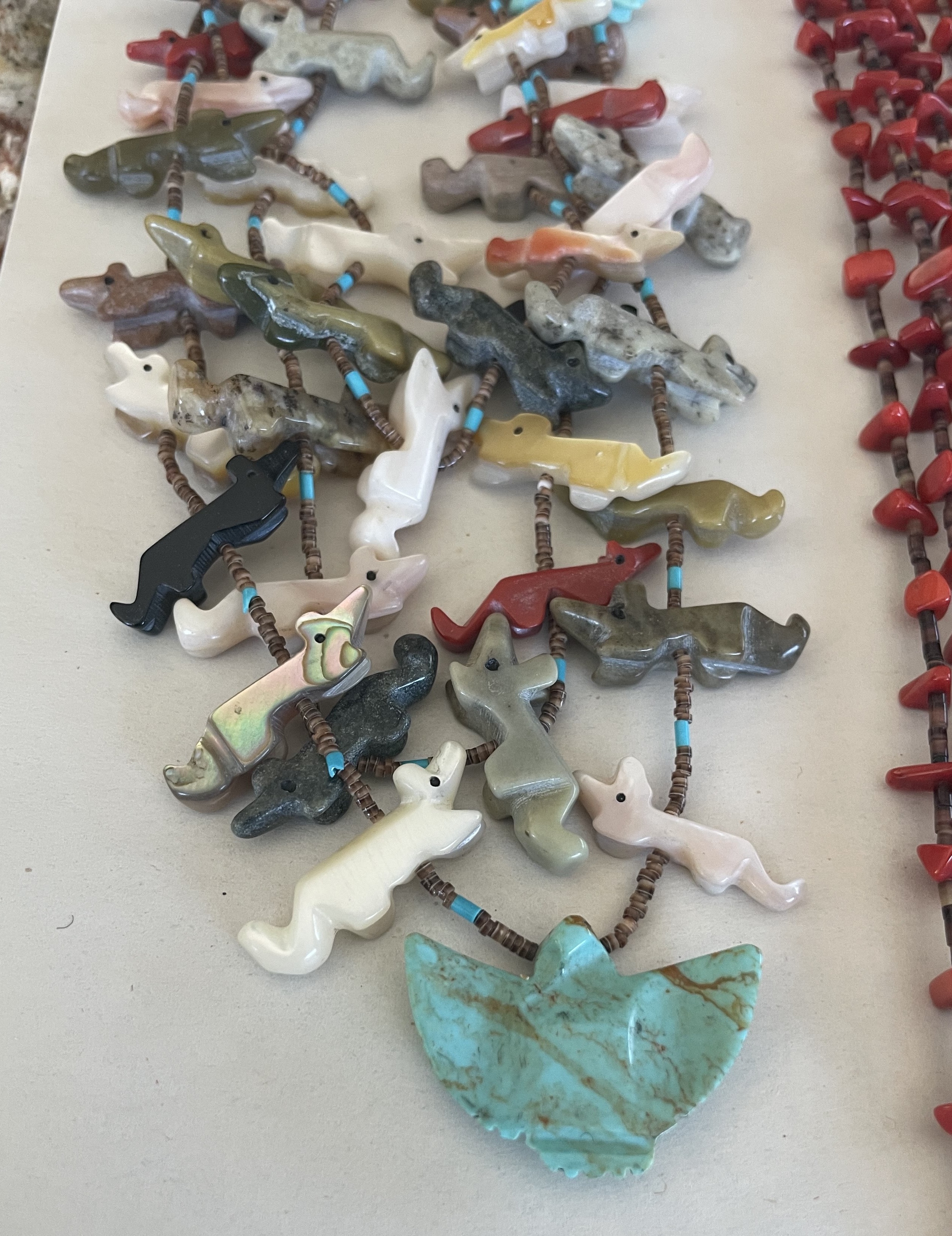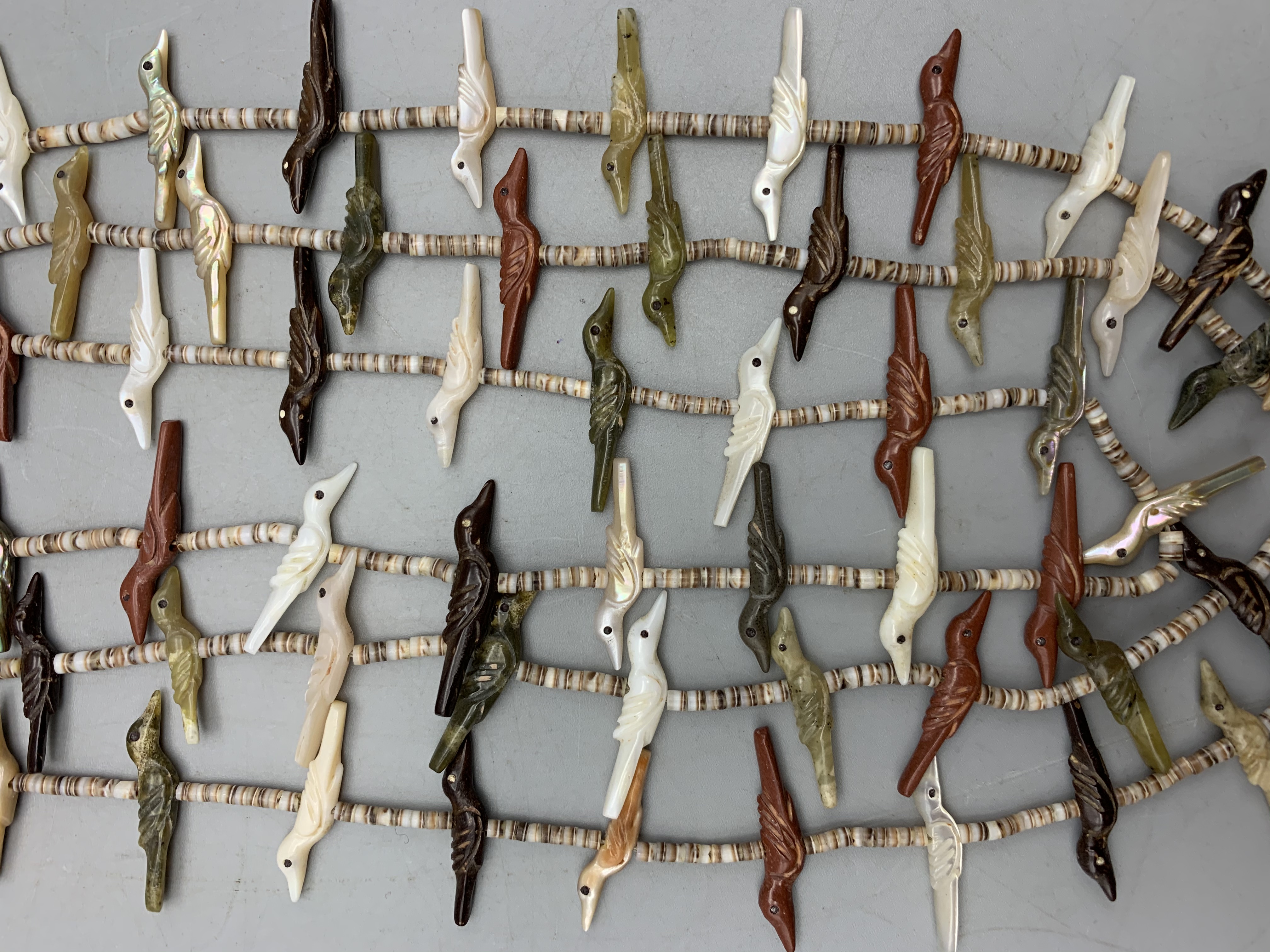Collecting Vs Collecting Well
Posted by Jim Olson on Aug 4th 2022
There's a difference between collecting — and collecting well.
We are big proponents of collecting. I have always said it is nice to be surrounded by your savings accountable, enjoying it in your home, instead of having it all locked away in a bank somewhere. However, when collecting as an potential investment, we need to get educated about what we are doing! You would not (or should not) invest in the stock market, not having a clue as to how the stock market works. You should not invest in real estate blindly or buy something just because it is “cheap.” As a matter of fact, a wise investor does not invest in anything without having a good general knowledge of what he or she is investing in — and preferably also get some advice from an expert in the field.
.
This fetish necklace below is a foreign import and almost valueless.

While this fetish necklace is by the famous Zuni Carver David Tsikewa and is worth well over a thousand dollars.

Both necklaces above look similar to the untrained eye. So that is why it is very important to educate yourself and also deal with reputable dealers who will stand behind what they sell.
Educate yourself - Educated collectors do not buy “collectibles” for investment that were made in China by a corporate giant. Or buy “crafts” from road-side vendors near points of interest made for the tourists, or buy Western memorabilia made overseas. Remember, just because it was a “deal,” does not mean it was a good buy. There is “cheap” and there is “inexpensive.” Know the difference.
One of the first rules of buying as an investment is — don’t buy junk! Know the market on things you intend to collect. If you collect coins, know what they are worth. If you collect stamps, know the stamp market. If buying art is your thing, study it. If buying Native American arts and crafts, know that even though it may be “Native American made,” that does not necessarily mean it is collectible. Learn the difference between quality, handmade items and “crafts” which are hastily put together for the tourist trade. Quality is quality, no matter who made it. Sure, buy certain items because you like them, that is perfectly ok, but do not think you are buying them as an “investment.” There is a difference between collecting just because an item pleases you, and actually buying something with a decent resale value in the future.
Buy the best you can afford - Another thing a lot of people believe is that collecting will break the bank. That need not be the case. You don't have to buy the best of the best right now. Buy the best you can afford at the time (instead of a whole bunch of quantity), and then trade up later on when you can.
Keep the end game in mind when collecting - Try to collect things that aren't necessarily made to be collectible. Things that have a good track record of appreciation. And, just enjoy it. Collecting is meant to be fun. And if you do it right, it can be an investment. Do your due diligence and educate yourself, and you may well see yourself investing in the future.
Basic things to remember when collecting for investment - *Start small and collect what you like, but remember, quality is important.
*Things made to be collectible — rarely are. This includes pretty much all kinds of commemorative or mass produced items. If your “collectible” says “Made in China” or “Made in Taiwan” on it — realize it’s not likely a long-term collectible. It is a decor item, or a cheap knock-off. There is a difference between collectibles and decor. Decor is rarely collectible, but collectibles can sometimes make great decor.
*Mass produced items do not necessarily just come from large companies. Check out most any gift shop for examples of crafts that are collectively mass produced by various groups of people.
*Things that have survived a long period of time and remain in good condition are often sought after.
*While condition is a big factor in value, restoration is generally not desirable.
*Rarity (or uniqueness) is usually a factor. Things whereby only a few have survived the test of time, or items that stand apart are generally sought after. If there are dozens of them that all look alike, be careful.
*Beware of fads in the market.
Western Trading Post desires to help you gain more knowledge of the rich Western History and Lifestyle we live and love. The opinions put forth here are just that, our opinion—not financial advice. Do your own due diligence before investing.
Here are some helpful links to explore more – Award-winning TV show, YouTube channel, and app.
Related articles:

